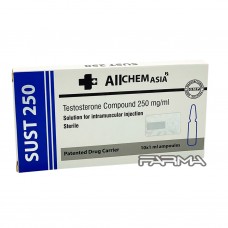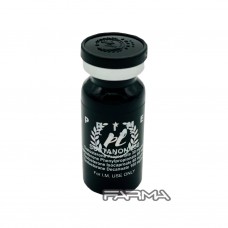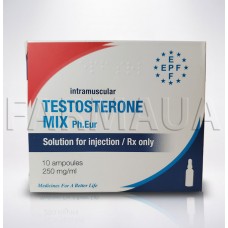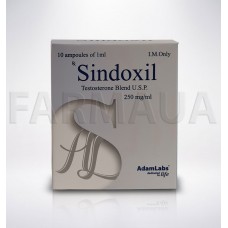Sustanon is a testosterone blend that contains a combination of four different testosterone esters: testosterone propionate, testosterone phenylpropionate, testosterone isocaproate, and testosterone decanoate. It is commonly used for hormone replacement therapy (HRT) in males with hypogonadism and for performance enhancement in athletes and bodybuilders. Understanding the medical uses, effects, and considerations of Sustanon is crucial for individuals considering its use, as well as healthcare professionals involved in managing hormone-related conditions.
Medical Uses of Sustanon:
-
Hormone Replacement Therapy (HRT): Sustanon is used therapeutically in males with hypogonadism, a condition characterized by insufficient production of testosterone. It is administered as part of testosterone replacement therapy to restore normal testosterone levels, alleviate symptoms of hypogonadism, and improve quality of life.
Non-Medical Uses of Sustanon:
-
Performance Enhancement: Sustanon is commonly used off-label by athletes and bodybuilders to enhance athletic performance, increase muscle mass, strength, and endurance, and improve physical appearance. It is often used in conjunction with resistance training and other performance-enhancing drugs to maximize results.
Considerations for Sustanon Use:
-
Composition and Dosage: Sustanon contains a blend of testosterone esters with varying half-lives, resulting in a sustained release of testosterone into the bloodstream. The dosage of Sustanon varies depending on individual factors such as age, gender, medical history, and response to treatment. It is typically administered via intramuscular injection into the gluteal muscle, thigh, or deltoid muscle, with dosing frequency ranging from once every 1 to 4 weeks, depending on the formulation and desired testosterone levels.
-
Monitoring Testosterone Levels: Regular monitoring of testosterone levels is essential during Sustanon therapy to ensure adequate hormone replacement and minimize the risk of adverse effects such as testosterone excess (supraphysiological levels) or deficiency (suboptimal levels). Healthcare providers may perform blood tests to assess testosterone levels and adjust treatment as needed.
-
Potential Side Effects: Common side effects of Sustanon therapy may include acne, oily skin, fluid retention, gynecomastia (enlargement of breast tissue in males), hair loss, and mood changes. More severe adverse effects may include cardiovascular complications, hepatic dysfunction, and prostate enlargement. Individuals should be aware of the potential risks and benefits of Sustanon therapy and discuss any concerns with their healthcare provider.
-
Hormonal Imbalance: Prolonged or excessive use of Sustanon can disrupt the body's natural hormone balance and may suppress endogenous testosterone production. After discontinuation of Sustanon therapy, individuals may experience withdrawal symptoms and temporary hypogonadism until normal testosterone production resumes.
-
Legal and Regulatory Considerations: Sustanon is classified as a controlled substance in many countries due to its potential for misuse, abuse, and dependence. Its use for non-medical purposes, such as performance enhancement or bodybuilding, is prohibited by most sports organizations and regulatory agencies. Individuals considering Sustanon use should be aware of the legal implications and regulatory restrictions in their country.
Conclusion: Sustanon is a testosterone blend commonly used for hormone replacement therapy in males with hypogonadism and for performance enhancement in athletes and bodybuilders. Understanding the medical uses, effects, and considerations of Sustanon is essential for individuals considering its use, as well as healthcare professionals involved in managing hormone-related conditions. Proper dosage, monitoring, and adherence to treatment guidelines are essential for safe and effective Sustanon therapy. Individuals considering Sustanon therapy should consult with a healthcare provider for personalized evaluation and management based on their specific medical needs and circumstances.















